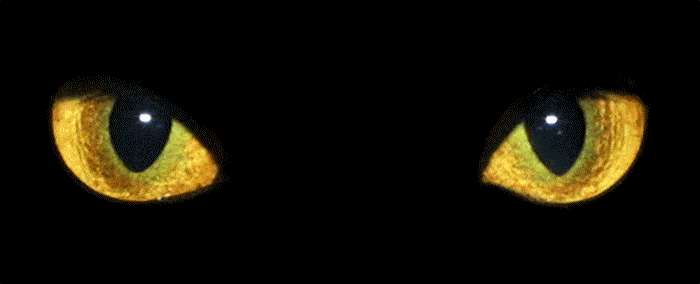Everyone knows that cats prefer night activities due to their ability to see in the dark. But how can they do this? Are they supernatural animals or do they use special night vision devices? Actually, they have special adaptations for night walk and hunting. that’s OK, but recently, a boy with cat’s night vision abilities was found in China. Does this boy have the same vision adaptations as cats (so, can people have same features?) or is it just a nature trick? Let’s now try to see the world as cats do.
Cats, in fact, cannot see in absolute darkness. They see in low-light conditions, moreover, they cannot distinct objects. Photoreceptors of their eyes are activated with the light reflected from those objects. That’s why animals cannot see anything in the absolute absence of light. But cats’ eyes have some specific features making them more sensitive to the small amount of light. Such accommodation is an evolutionary trick that gives opportunity to hunt at night, when a victim cannot see anything.
There are three main adaptations for cats’ night vision:
- vertical pupil
- particular retina
- tapetum lucidum.
Pupil is slit in the iris allowing the light to enter the eyes. Cat’s eye has a vertical thin pupil in high-light conditions. That’s why less light passes through the pupil into eye and cat’s eyes are not harmed. But pupils become round in the dark their very fast. Each pupil takes 90% of the eye area. It allows more light to come into the eye. Some scientists believe that the vertical pupil can change its shape faster than round pupils. Interesting that big wild cats (lions, tigers, leopards) have round pupils while domestic cats have vertical ones.
Light sensitive part of an eye is retina, which is formed of neurons with different functions. One of them is light-sensitive photoreceptor cells that transform light into neural signals. There are two kinds of photoreceptors – the rods and cones. The former are activated in low-light conditions, provide black-and-white vision and perception of objects shape, while the latter are activated in high-light conditions and provide color vision. Cat’s retina contains sixth times more rods than the human retina. That’s why their eyes are more sensitive to small amounts of light.
Another specific feature of cat’s eye is tapetum lucidum behind the retina that is formed with some layers of flatted cells. These cells are filled with particular zinc-containing proteins composed into regular clusters of crystals. Such pigments reflect light and direct it once more to the retina thus enabling even small amounts of light to reach retina after second reflection.
Mysterious gleaming of cat’s eyes in the dark is a result of light reflection with tapetum lucidum. So don’t be scared, cats are not supernatural. It is interesting that other vertebrates, fishes and birds have tapetum lucidum. But it is degenerated in primates, including humans. So unfortunately humans cannot see in low-light conditions. Probably this is why (luckily) such night fun is not so popular among human:
Now, let’s have a look at a boy with unnatural blue eyes found in China five years ago. Boy’s teacher says he can see in the dark like cats, besides his eyes flash after illumination. Scientists have different opinions about this fact with supporters believing that boy has tapetum lucidum due gene mutations or increased amount of rods. However, most experts consider that development of the tapetum is not possible in human, because such accommodation requires multiple mutations which cannot occur at the same time while photoreceptors cannot be counted. So, further ophthalmic examination must be provided to determine if this boy really has cat’s vision.
Apart from everything aforementioned, cats appear not to have excellent vision in daylight. Scientists consider them nearsighted as they cannot see far objects. Their retina contains less cones, which are responsible for color perception. Nevertheless, they are not color blind: cats don’t see shades of red and purple. The world they see seems to be greener and bluer only.








